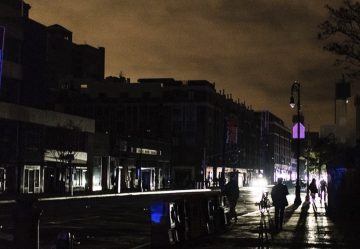Keith Harary in Aeon:
 You might find your car dying on the freeway while other vehicles around you lose control and crash. You might see the lights going out in your city, or glimpse an airplane falling out of the sky. You’ve been in a blackout before but this one is different.
You might find your car dying on the freeway while other vehicles around you lose control and crash. You might see the lights going out in your city, or glimpse an airplane falling out of the sky. You’ve been in a blackout before but this one is different.
In critical facilities across the country, experts predict that it is only a matter of time before the electrical infrastructure holding society together undergoes catastrophic failure. According to the most recent report of the United States Congressional Commission appointed to assess the risk, published July 2017, we face the threat of ‘long-lasting disruption and damage’ to everything from power and clean water to electronic banking, first-responder services and functioning hospitals. Until now, such a dire prediction has typically been associated with only the most extreme doomsday true believers but William Graham, the former chairman of the Congressional Electromagnetic Pulse (EMP) Commission, says that in this case they could be right.
In the broadest sense, an EMP is a sudden burst of extreme electromagnetic interference that causes systems using electricity – especially devices controlled by chips or computers – to fail when the load gets too high. EMPs come in three basic varieties, including a ground-level or high-altitude EMP (HEMP) released by a nuclear burst that could potentially impact power lines, transformers and other critical devices; drive-by EMPs created by high-powered microwave weapons that could silently incapacitate equipment from hundreds of yards away; and coronal mass ejections (CMEs) resulting from solar storms that could interfere with the magnetic sphere surrounding the Earth, bringing down the grid that powers the electronic devices defining our contemporary way of life. According to the 2017 report, Russia, China and North Korea could already have these weapons under wraps.
More here.
